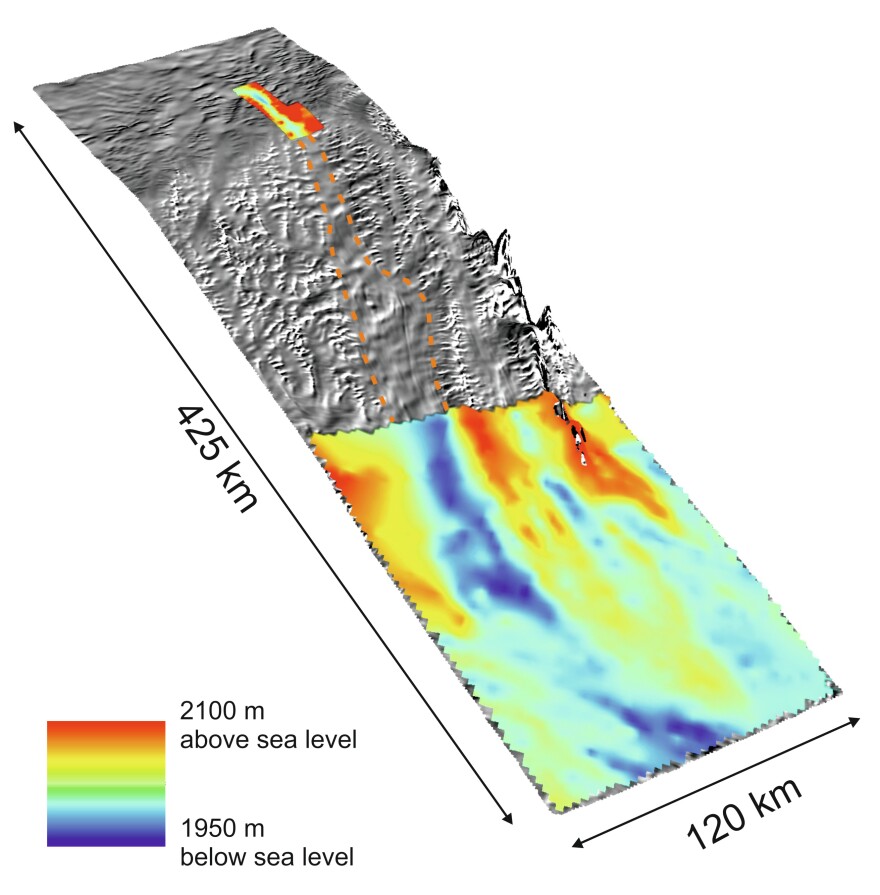Not long ago, researchers found something amazing under the ice of West Antarctica: a valley deeper than the Grand Canyon, measuring about 2 miles deep, 15 miles across and nearly 200 miles long.
Neil Ross, lead author of the paper on the discovery, wasn't looking for the valley — he found it by accident.
Ross spends most of his time in Antarctica measuring the thickness of the ice sheet and surveying features below the surface using radar technology. The expeditions last for weeks or even months.
"It's a mix of incredible and horrific at the same time. The first two seasons that I did ... minus-20 was the average temperature," said Ross. "I can cope with temperatures of minus-30 if the wind doesn't blow, but once the wind starts to blow it can be a pretty horrible place."
After his latest research stint — a short trip to study a fast-moving portion of the ice sheet, Ross was checking his routine survey data when the pieces suddenly fell into place: The valley had been beneath his feet the whole time.

"That was a really exciting moment, and it took me awhile to convince myself that what I was seeing was actually true," he said.
Carved by glaciers millions of years ago, the valley provides a record of how the Antarctic ice sheet behaved in a warmer past climate — and therefore indicates what the ice might look like in the future.
"We're seeing that the ice sheets are changing in certain parts, particularly around the coastal fringes," said Ross. "What we need to do is to understand how these systems might have behaved in the past. So it's a window into the past, but it also gives us a clue as to what might happen in the future."
Of course, ancient ice can't predict the future. But one thing is certain, said Ross:
"Some of the changes that we're seeing to our climate system and to our environment are amplified in the polar regions, and as a result there has to be a real focus on these areas. And to some extent that's happening, and that's why we're making these discoveries.
"We're getting people out there to make the measurements and to observe these situations and these environments, and we're learning more and more."
Ross's paper was published in the Geological Society of America Bulletin.
Copyright 2021 NPR. To see more, visit https://www.npr.org.


